
L to R: Shaun VanBeber, Jim Resier, Jon Askins, Juan Cardona, Janice Martinez, Tim Roberts, Brian Muhlbach, Nick Wollschlager
Funded by the Florida Department of Transportation (FDOT) and the National Highway Traffic Safety Administration (NHTSA), the Florida Law Enforcement Liaison (LEL) Program was established in 2000 and operates under the Institute of Police Technology and Management (IPTM).
The Florida LEL Program supports law enforcement agencies across the state in advancing traffic safety initiatives. By promoting and coordinating participation in national and state campaigns and mobilizations, the program works to reduce crashes, fatalities, and serious injuries on Florida’s roadways. To recognize agency contributions and encourage a culture of sustained, data-driven enforcement, it also coordinates the annual Florida Law Enforcement Traffic Safety Challenge.
Staffed by experienced law enforcement professionals, including retired officers and those still serving in reserve roles, each of Florida’s seven FDOT districts is supported by a full-time Law Enforcement Liaison (LEL). The team operates under the leadership of the Program Coordinator and brings more than 200 years of combined law enforcement experience. Their core responsibilities include promoting high visibility enforcement, supporting grant initiatives, and fostering consistent, effective traffic enforcement and education.
LELs work directly with law enforcement agencies to implement traffic safety campaigns, coordinate public safety and press events, lead training sessions and Local Area Network (LAN) meetings, and provide guidance and support to agencies in securing and managing traffic safety grants. They also facilitate the exchange of critical information, including crash data and trends, officer training, checkpoint planning, and legal updates. Additionally, each LEL serves on one or more of Florida’s traffic safety coalitions and provides support to Community Traffic Safety Teams (CTSTs) across their districts.
Through direct agency support and statewide coordination, the Florida LEL Program strengthens law enforcement engagement in traffic safety and advances our mission of One Team. One Goal. Save Lives.
